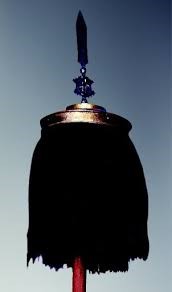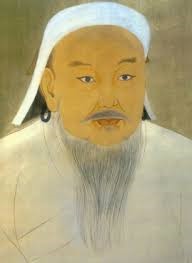I virtually visited the National Museum of Mongolia, featured by Google Arts and Culture during the COVID 19 pandemic, to explore the ancient history of the Mongolian Empire. I explored that Mongolians conquered around fifty countries brought together almost half of the population in the world in the 13th and 14th centuries. The territories which they occupied included Siberia to South Asia, from Korean Peninsula to Bulgaria. The Google Arts and Culture exhibits ancient battle equipment, armor, ceremonial banners, and the capital Kharkhorum of the Mongol Empire. The museum displays 300 historical and cultural objects from the 13th-14th centuries and portraits of some great leaders.
Amongst the historical objects, a few came out to be interesting to me. One of these is the “White Banner”. Also called the peace banner, was raised by the leaders during wars to announce peace with the army of the enemy in a battle. The White Banner was made from the tails of white mares. Another historical object in this museum is the “Black Banner”. This banner was particularly used during the wars to concentrate and mobilize the power of all the Mongols towards defeating the army of the enemy. This banner was significant as it stood for the power of an “Everlasting Blue Heaven”. The museum also displays Armored boots. These were made up of calfskin imported from central Asia. These boats had high ides with ties which were secured with the trousers. There is also places a bow and arrow set. The Mongol bow had a distinctive feature of a curved shape. Other battle weapons in Mongolian history had arrowheads, knives, swords, and battle-ax. The most fascinating object in the National Museum of Mongolia is the letter of Peace sent from IL Khan Ulziit to Louis Phillipe. The language of the letter was a Mongolian script of 42 lines long. This letter was sent to the King of France in 1304 stating that the Mongol Empire has been able to bring peace between the people under his rule and now they collectively stand against intruders but they would also like to be at peace with European countries. The last object kept in the museum that I would like to talk about is the Khugshin Teel Monument Stone. This monument has an inscription on it stating the time when King Khubilai and Arigbuh were fighting for the rule. The castle was called Ruins of Khugshin Teel by the locals.
Figure 1 The Black Banner
Other than the objects displayed in the museums, the eye-catching elements included portraits of great leaders from the Mongol Empire. The first portrait I came across was for Chinggis Khan. This leader was stated to be an amazing organizer, a diplomat, a politician. He was also praised to be a warrior who not only set up a legitimate system in the territory but also gave a boost to the economy while ensuring effective and healthy foreign relations. His charismatic power was so popular that to date he is being regarded as the father of the nation due to his efforts of uniting the people of the land by giving them one common identity which was previously divided due to cultural background and nomadic lifestyle. His list of achievements goes a long way. He led battles against the Tangut State, Jin Dynasty, Khwarazm Shah, and Mohammad II (Prawdin, 2017).
Figure 2 Portrait of Chinggis Khan
The next leader listed in Mongolian history was Ogodie Khan. He succeeded Chinggis Khan and started contributing to the strengthening of state affairs from an age of seventeen. He organized the state order and finished the construction of the capital city Kharkhorum which was initiated by his father. During his regime, the state became more sophisticated, and better economic reforms were established and implemented in the state. The military campaigns of Ogodie Khan were against northern China and the Jin Dynasty. Moreover, Mongolian troops invaded the Bulgarian Khanate, Russian Countries, Hungry and Poland. Later the Mongolian troops also went into the langs of Vienna and the Adriatic Sea. The final portrait displayed in the National Museum of Mongolia is of Khubilai Khan. He is ranked as the second most famous King of the Mongol Empire. He continued on the path which was set by his forefather. During his rule, all eastern countries other than Japan were under Mongol Empire. The reputation of Mongols deteriorated when the king shifted the capital from Kharkjorum to Daidu in 1264. Moreover, he changed the language for state affairs to Pages-pa script (Broadbridge, 2018). The museum states according to research, Khubilai was amongst all other leaders, the most educated king that Mongol Empire had. The empire saw the rule of Khubilai Khan for 34 years after which the state affair crises emerged following his death. After his death, the rebellious Chinese farmers chased Togootumar Khan out of the Yuan Dynasty and the empire collapsed.
In conclusion, this activity gave me an insight into the history of the Mongol Empire from the 13th-14th century. I found this activity interesting as learning about the ancient objects which were used during wars amazed me.








